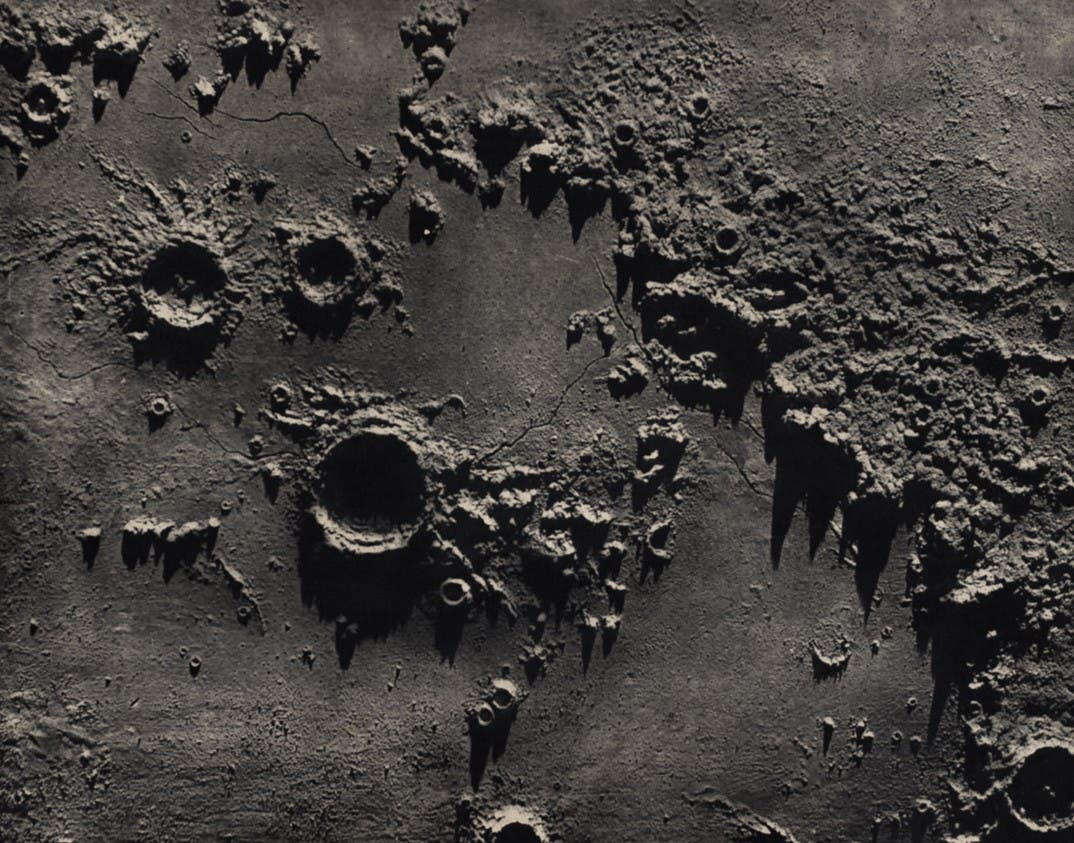1700-1800
Bianchini, Francesco (1662-1729).
Hesperi et Phosphori nova phaenomena sive Observationes circa planetam Veneris. – Rome: Apud Joannem Mariam Salvioni, 1728.
It is curious that the first two good views of particular lunar features appeared in books devoted to subjects other than the moon. The first was Hooke's sketch of Hipparchus in a book on the microscope, and the next was this drawing of Plato and the Alpine Valley in a treatise on the planet Venus (the morning and evening star, Hesperus and Phosphorus). Bianchini's studies of Venus raised the vexing problem of deriving topography from shadow patterns, and this led him to the study of lunar craters.

